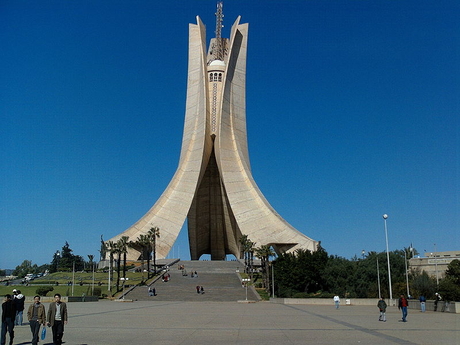Algeria, Algiers: Fusion of European and Islamic Architecture

Spring Reading Is Brought to You By:
As it is usual for Mediterranean cities even Algiers origin lies in the ancient times. It used to be part of Phoenician empire, the former sea power. Then it used to be part of several other empires such as the Roman Empire, Ottoman Empire and roughly two centuries ago it became a French colony. As well as in other parts of Africa (Rwanda, Senegal nebo Morocco) France was pretty engaged there and left there huge cultural influence even after the colonies split. Algeria seceded in the year of 1962 after the war with France.
Even today, in local cafes, you can hear elderly men reminiscing about their experiences in the Franco-Algerian war and their hiding from French paratroopers. It was not the last conflict the country went through, in the 1990s there was a civil war during which around 200,000 people reportedly died. In the present, in Algiers, about 10% of the Algerian. population live in the capital, which is a natural engine of country’s economy. Mediterraean climate is typical for the city and temperatures often get over 40 degrees. From broaden architectonic perspective the architecture of Algiers is a combination of European and Islamic style. One of the major symbols of Islamic architecture is Great Mosque is located near harbor in 1097.
Its only minaret was built only at the beginning of the 14th century. Except of this the mosque is located in Kasbah. It is a part of the city, which in North Africa villages and towns used to be a fortress protecting locals from raiders. Local prominent families and leaders who had Kasbah were considered to be wealthy. At the beginning of the 19th century, Algiers had three Kasbahs.
Notre Dame d’Afrique represents European heritage. This catholic cathedral was opened in the year of 1872 and its architect, Jean Eugène Fromageau, included some neo-Byzantine elements and he put there a inscription: „Our Lady Africa prays for us and Muslims as well.“ You can get to the cathedral via the cableway The cableway will take you to a rock 124 meters above the sea.
Another, more modern construction is Maqam Echahid, Martyrs’ Memorial. It was finished in 1982 and it stands as a symbol of Alegerian independence. Its shape represents three palm leaves leaning on each other. The leaves protect eternal flame and by every leaf there is a soldier. Each soldier symbolizes a phase of Algerian fight for independence.
Djamaa Ketchaoua is a landmark that immediately attracts one attention. Originally, it was a mosque built at the beginning of the 17th century. In the middle of the 19th century, French rebuilt it to a cathedral. However, after the French-Algerian war the cathedral once again became a mosque. Eventually, the images included in the article speak for themselves.
Text: Maxim Kucer
Photo: Pixabay.com, Wikipedia.org - Bachounda1, Algor95, Tripiit, Mac9, Poudou99, Mehnimalik, Ludovic
| Discussion at the article (0) |
Related Articles

Morocco, Ait Ben Haddou – Ksar in the Ounila Valley

Morocco, Casablanca – A Trip to African Coast of the Atlantic I

Morrocco, Imlil - A Climb Up Jebel Toubkal

Morocco, Essaouira – A Town with French Charm

Morocco, Casablanca – A Journey to the African Coastline of the Atlantic II

Morocco, Merzouga – Staying Over Night in Desert

Morrocco, Ouarzazate – Atlas Film Studios

Tunisia - A Country Rich In Experiences and a Paradise for Filmmakers

Tunisia– Thourgh North Following History

Tunisia, Sahara – To the Desert
Related Photogallery

Tunisia – Ancient Beauty of North Africa

Morocco – African Romance
Guide:
Important Information:
![]() Information and warnings on travelling abroad is to be found HERE.
Information and warnings on travelling abroad is to be found HERE.
































